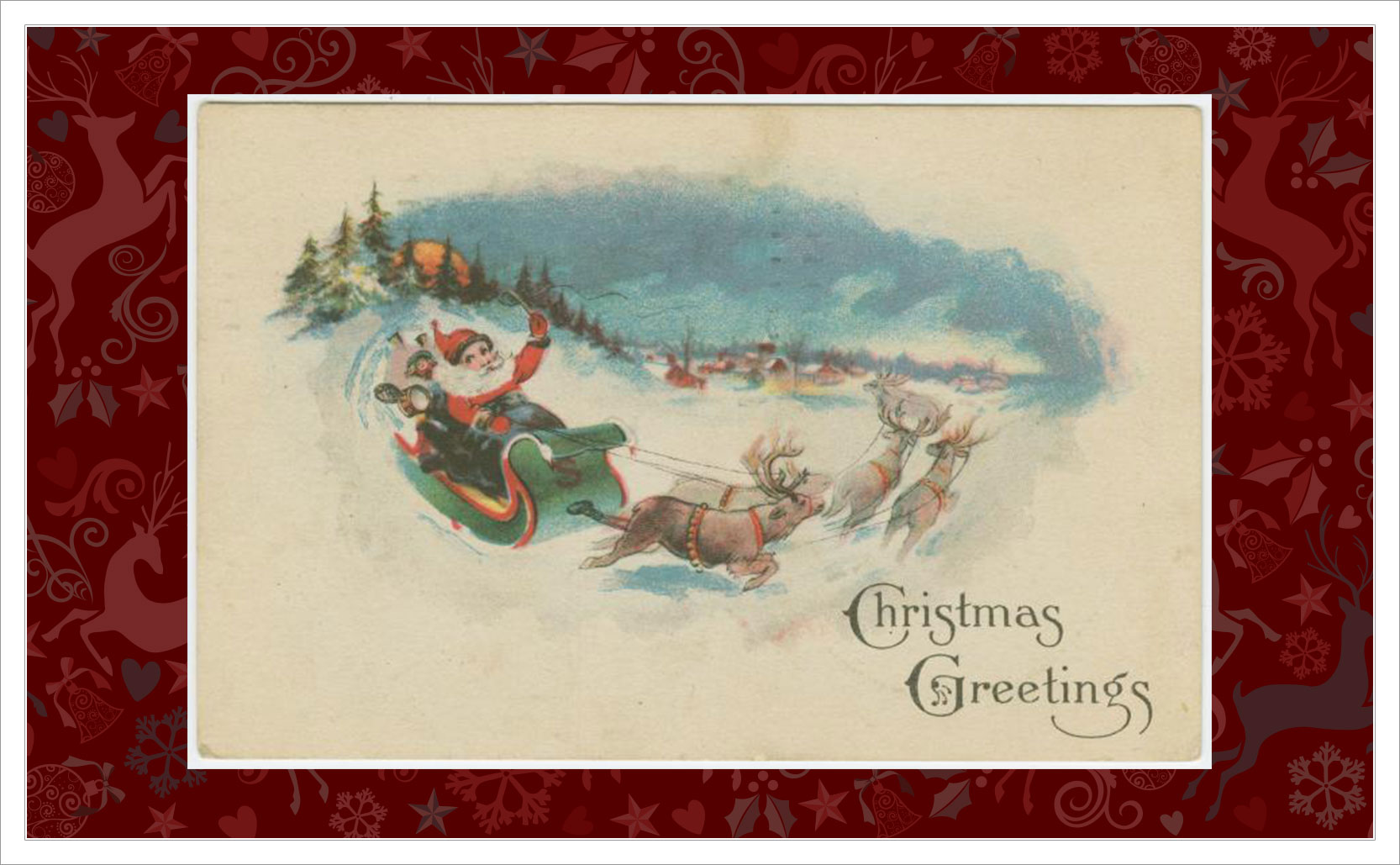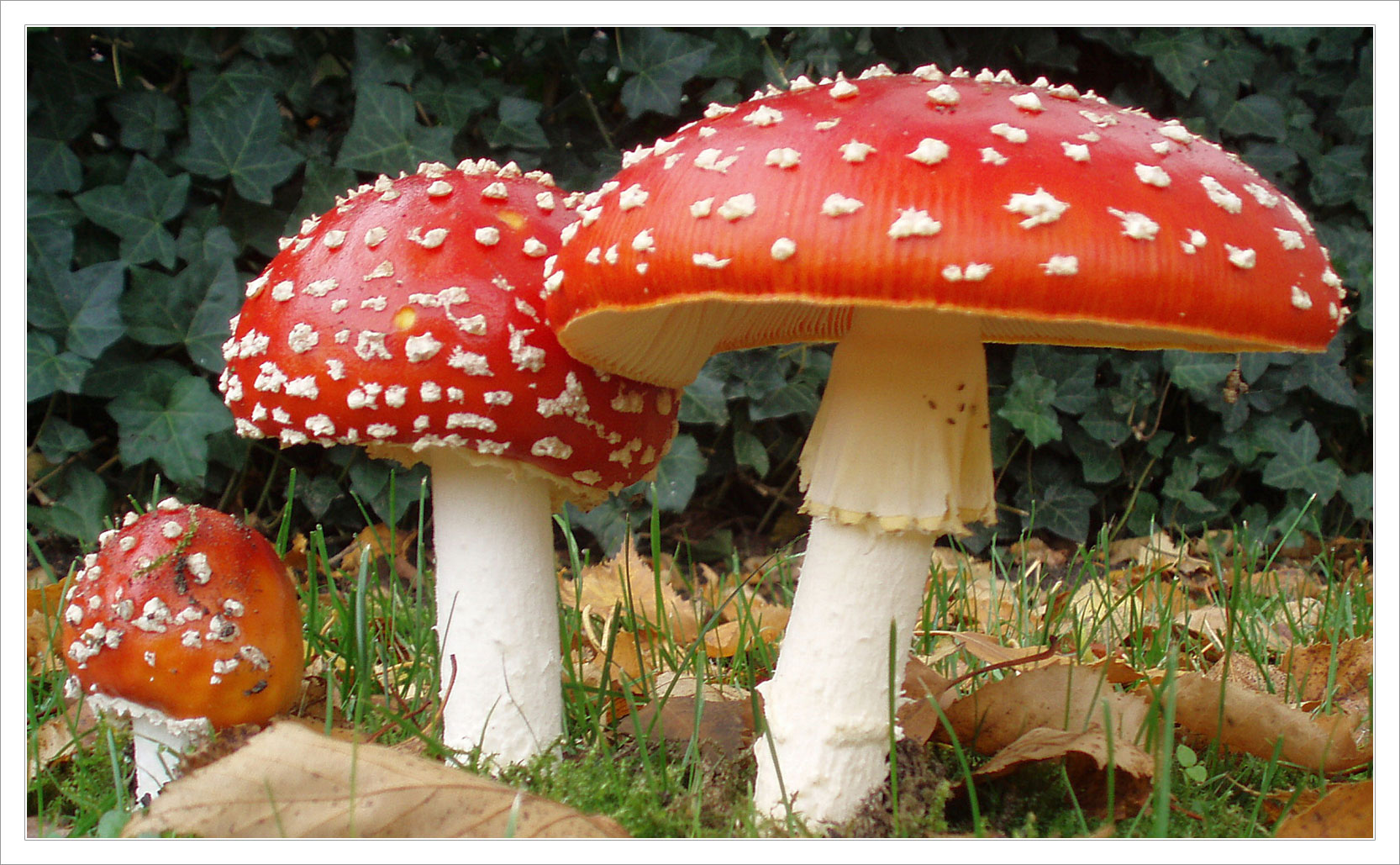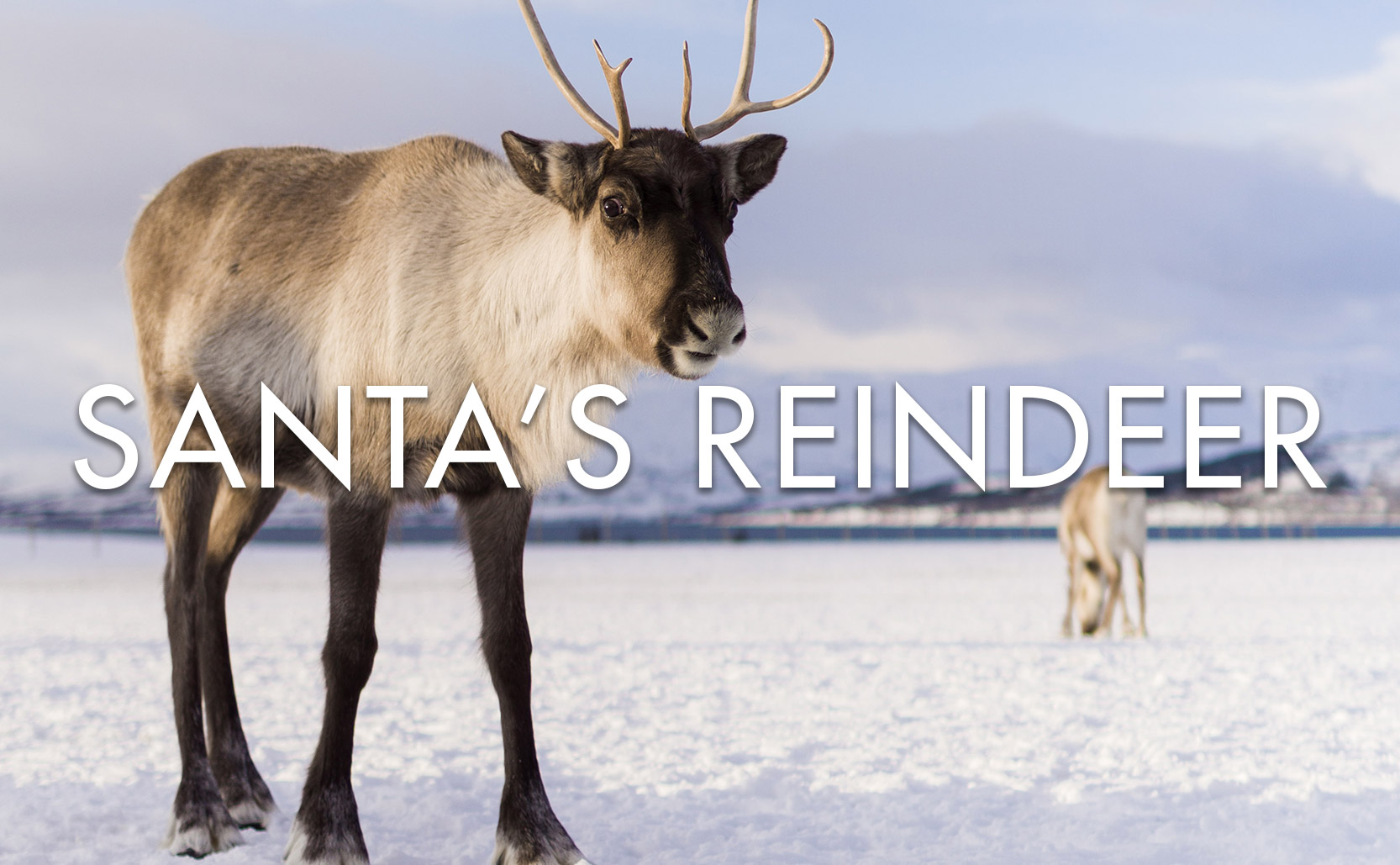Santa’s Reindeer
Santa’s reindeer are all female and possibly on drugs.
Our primary source of information regarding Santa’s reindeer is the 1823 Clement Clarke Moore poem A Visit from St. Nicholas (aka ‘Twas the Night Before Christmas). As one of the most influential cultural artifacts regarding Santa Claus, the poem tells us that Santa’s sleigh is pulled through the air by eight reindeer. Rudolph, the red-nosed reindeer, is optionally added to the front of the team based on the Robert Lewis May 1939 story.
Who is flying the sled?
Reindeer are a species of deer and, as an Arctic and sub-Arctic animal, they are well-suited to assist Santa at the frigid North Pole (even though they are not naturally found at the pole). They graze primarily on lichen which is found a bit south of the North Pole. Their ability to see ultraviolet light, an ability shared with other deer, allow reindeer to spot food, predators, and mates more easily amongst the highly reflective snow.

In pop-culture Santa’s reindeer are almost always depicted as having antlers. Both male and female reindeer grow, shed, and regrow their antlers. Male reindeer shed their antlers around November once mating season has ended but female reindeer keep their antlers until late May (giving expecting reindeer mothers the ability to defend food sources throughout the winter). That said, castrated male reindeer will retain their antlers February or March. Therefore all of Santa’s reindeer are either females or castrated males.
As for Rudolph, who could confusingly be a female reindeer with a male name, his/her red nose could be attributed to the reindeer nasal system which contains nasoturbinal bones. This system of curled bones increases the surface area with thin tissue inside reindeer noses which helps to warm air on the way in and recapture moisture when breathing out. It may not be glowing red, but for ordinary reindeer their noses are an evolutionary feature that enable them to live in harsh winter conditions.

Magic Mushrooms
In any of the original stories of Saint Nicholas his mode of transportation would have been a horse or a donkey. The introduction of reindeer moves the story, and Santa Claus, to the frosty areas of Northern Europe/Asia. As for flying reindeer, the ability to fly is not commonly found in reindeer. One theory for this association comes from the shamanistic religions of these northern cultures.
Due to the historically migratory nature of Laplanders they did not have a regular supply of alcohol until the recent past. It would have been fairly cumbersome to move alcohol production on a regular basis, let alone the challenge of keeping the yeast alive & active in the extreme cold. So instead as a way to come closer to God, or just go out of their minds, they had Amanita muscaria (aka the Fly Agaric) hallucinogenic mushrooms.
On their own the Fly Agaric mushrooms are hallucinogenic but poisonous. To reduce the toxic poisonous effects, but still get the hallucinogenic benefit, you have to process them. Outside of just eating lichen reindeer will also sometimes eat the Fly Agaric mushroom. The people of these northern regions learned you could “process” the mushrooms through the reindeer. After the animals had eaten the mushrooms people would collect and ingest the reindeer urine to receive the psychoactive benefits of the mushrooms with less of the toxic effects. Interestingly they would also “process” the mushrooms through other humans, which has a long (and fairly disgusting) history of people drinking the urine of others to get high.
As for flying reindeer, when the reindeer are high on the mushrooms their movements are erratic (but not flying). When humans are on the mushrooms however, they have reported taking shamanistic journeys with winged reindeer transporting them to the highest branches of the World Tree. Less dramatically, sitting around high on mushrooms people may have thought their reindeer were flying before their eyes.


